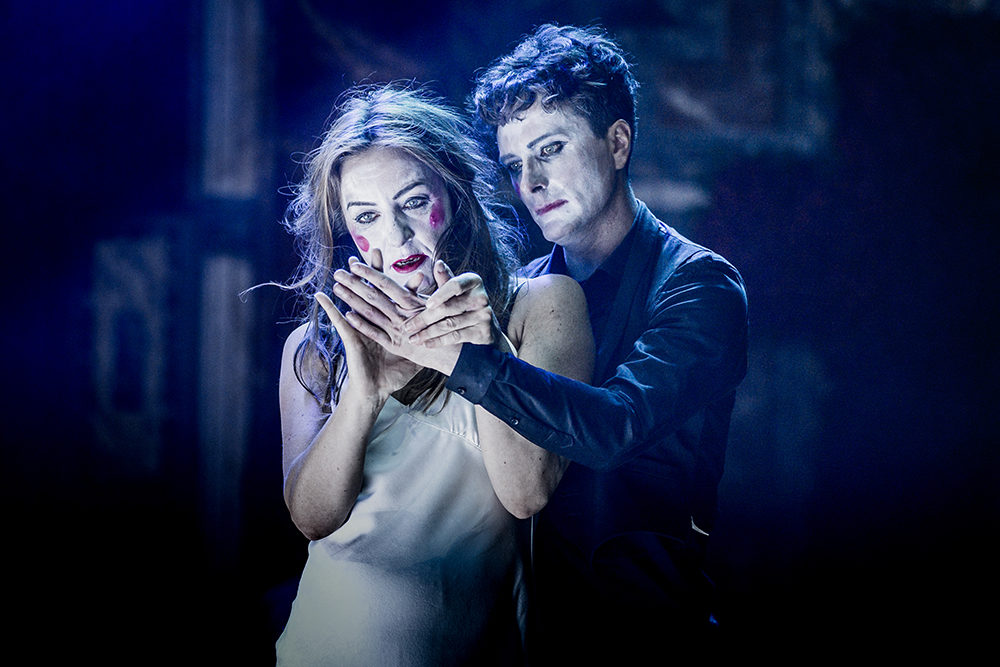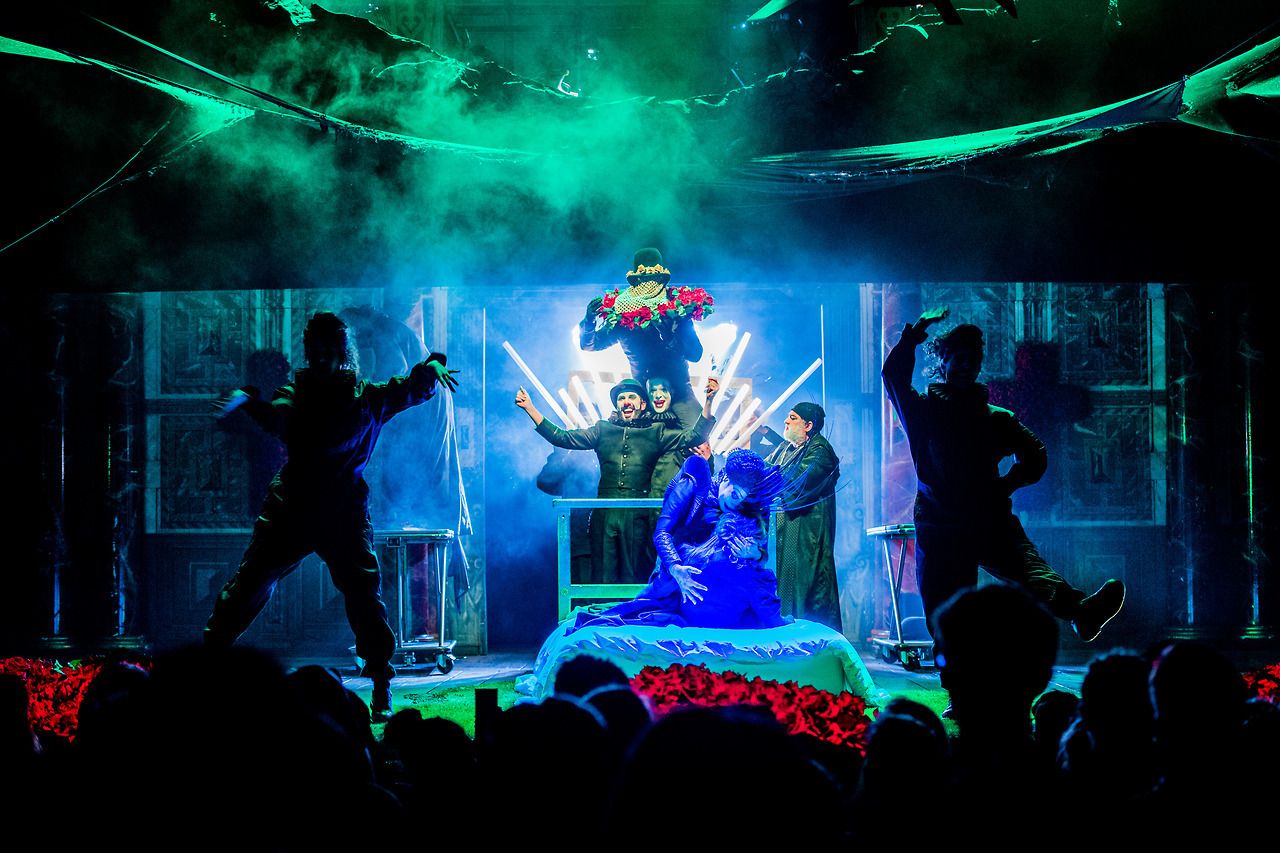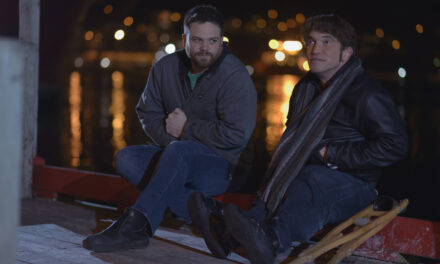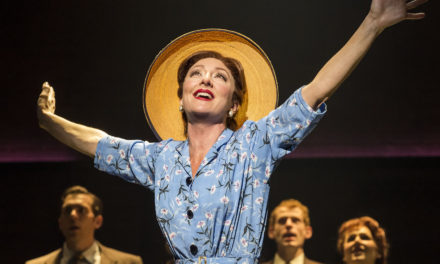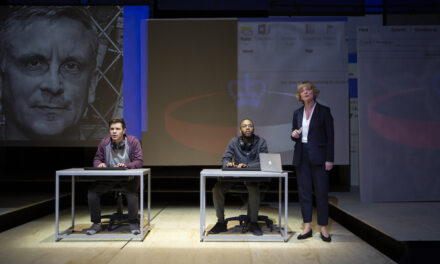This spring saw the premiere of three productions of Shakespeare’s Romeo and Juliet in London: CoLab’s interactive piece, the Union Theatre’s version exploring homosexuality in football, and the Globe’s new production of Romeo and Juliet for their Summer of Love season. In times of political conflict, Brexit, and terrorist attacks, this old tale of violence and love seems to gain relevance. In the latter production, directed by Daniel Kramer, love, desire and violence are layered on top of each other, and with bold visuals and a daring interpretation the classic releases its full power to examine violence and what can save us from it.
Daniel Kramer is a director unafraid of breaking expectations—and getting critics angry. Romeo and Juliet at the Shakespeare’s Globe shocks initially with its almost grotesque depiction of violence that veers into the sexual: biting your thumb is displayed almost erotically, and the first scene degenerates into a ravenous party with charged dances and thrilling rhythm. While it is uncanny, it is also amusing. The depiction of violence in this version of Romeo and Juliet points to its attractive allure, the morbid pleasure that fascinates audiences. And contrary to the tradition of distinguishing the Capulets and Montagues with different color schemes, in Kramer’s world, they are all the same, faces painted in white, cruel and clownish at the same it– almost an allusion to Día de Los Muertos’ skulls and therefore pointing towards death that looms in the atmosphere. As a claim, it suggests that violence can arise even when there are no differences between groups. What is the actual difference between a Capulet and a Montague? Juliet will not be the only one to ask this question.
While violence is expressed through exalted music and suggestive dance, the moments of true physical contact are highly stylized. When Tybalt slays Mercutio there is no knife, no loud gunshot. He just shouts “bang.” It almost seems as if it did not happen, until Mercutio’s hand appears covered in blood. Similarly, Romeo will shoot verbally and hit Tybalt’s corpse from a distance. With these displays of separation between act and consequence, violence is shown as emotionally detached. The audience struggles to understand how something as inconsequential as a “bang” can have such dire consequences. The popularization of violence so pervasive in our culture has made us lose the real connection to what violence truly is.
Romeo and Juliet is not just a story of violence, but also a story of love. And in Kramer’s production love offers the physical closeness that violence takes away. Both take place in the same space, and sometimes simultaneously—with a masterful cut and juxtaposition of key scenes that plays with pace in a cinematic way and reveals heart-wrenching parallelisms in Shakespeare’s poetry. The tension caused by the spatial distance between Romeo and Juliet is released in their kiss—they touch while violence separates.
At the end of the play, love has an effect as destructive as violence. It is in the love-ridden grief after Tybalt and Mercutio’s death, that the characters white make-up is smeared away to give way to the person behind it. When Lord and Lady Capulet find Juliet dead, their cruel masks fade. Lady Capulet reaches to her daughter’s hands, places them on her face, mimicking the gestures a baby would do. “Daughter” (as written with red roses on the stage) is a concept stronger than the hate that initially fueled their feelings. Romeo, initially taciturn and shy, comes back from Mantua grown with fire in his lost eyes and becomes a lone shooter in Juliet’s tomb.
All characters are visually changed by the end of this version of Romeo and Juliet: their make-up is gone, their expressions have become less caricaturesque to give way to a raw feeling. Was it love that changed them? Was it violence? Did they reach understanding? Salvation? Was it all in vain? Sometimes it takes a bold, visceral, irreverent production to re-evaluate what a well-known story is about.
This post was written by the author in their personal capacity.The opinions expressed in this article are the author’s own and do not reflect the view of The Theatre Times, their staff or collaborators.
This post was written by Aida Rocci Ruiz.
The views expressed here belong to the author and do not necessarily reflect our views and opinions.


